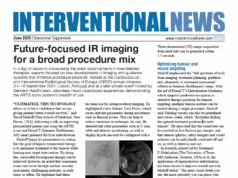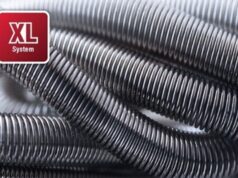
A randomised, open label trial that was published in the BMJ on 19 June 2018 suggests that the improvement in lower urinary tract symptoms secondary to benign prostatic hyperplasia (BPH) seen 12 weeks after prostatic artery embolization (PAE) “is close to that after transurethral resection of the prostate (TURP)”.
However, the investigators report that the non-inferiority of embolization to TURP could not be established in the trial. “Prostatic artery embolization is associated with fewer complications than TURP but has disadvantages regarding functional outcomes, which should be considered when selecting patients,” they write.
Dominik Abt, consultant urologist and a team of colleagues from Switzerland that includes Lukas Hechelhammer, section chief of interventional Radiology, set out to compare prostatic artery embolization with in the treatment of lower urinary tract symptoms secondary to benign prostatic hyperplasia in terms of patient reported and functional outcomes.
Trial details
The investigators randomised 103 patients aged ≥40 years with refractory lower urinary tract symptoms secondary to benign prostatic hyperplasia to either receive embolization or surgery. In the trial, 48 patients who were treated with embolization and 51 who were treated with surgery reached the follow-up endpoint 12 weeks after the procedure.
The authors report that embolization was performed with 250-400μm microspheres under local anaesthesia vs. monopolar TURP performed under spinal or general anaesthesia.
The primary outcome of the study was a change in international prostate symptoms score (IPSS) from baseline to 12 weeks after the procedure; a difference of less than three points between treatments was defined as non-inferiority for embolization and tested with a one-sided t test. The secondary outcomes included further questionnaires, functional measures, magnetic resonance imaging findings, and adverse events; changes from baseline to 12 weeks were compared between treatments with two-sided tests for superiority.
The mean reduction in IPSS from baseline to 12 weeks was −9.23 points after embolization and −10.77 points after TURP. “Although the difference was less than three points (1.54 points in favour of TURP, non-inferiority of embolization could not be shown (p=0.17),” the authors write.
“Before starting this trial, we did our sample calculations with assumed drop out rates etc. to correctly power this study. Nevertheless, our standard deviations regarding the primary outcomes for both interventions were larger than assumed for the sample calculations. Therefore, this study is underpowered to show non-inferiority of prostatic artery embolization. On the other hand, it does not show that embolization is inferior,” Hechelhammer told Interventional News.
Further, none of the patient reported secondary outcomes differed significantly between treatments when tested for superiority; IPSS also did not differ significantly (p=0.31). At 12 weeks, embolization was less effective than TURP regarding changes in maximum rate of urinary flow (5.19 vs. 15.34 mL/s; p<0.001), postvoid residual urine (−86.36 vs. −199.98 mL; p=0.003), prostate volume (−12.17 vs. −30.27 mL; p<0.001), and desobstructive effectiveness according to pressure flow studies (56% vs. 93% shift towards less obstructive category; p=0.003). Fewer adverse events occurred after embolization than after TURP (36 vs. 70 events; p=0.003).
“Improvement in lower urinary tract symptoms secondary to benign prostatic hyperplasia seen 12 weeks after embolization is close to that after TURP […] Further comparative study findings, including longer follow-up, should be evaluated before embolization can be considered as a routine treatment,” the authors write.
“Due to our results we believe that an ideal candidate for embolization is a man in whom the indication for intervention is primarily based upon symptoms; with a suitable vascular anatomy; and a reasonable volume of the prostate. Embolization can also be used for polymorbid patients not suitable for TURP.
Since embolization shows a less desobstructive effect after 12 weeks, TURP should be preferred in patients with bladder outlet obstruction (BOO) associated complications,” Hechelhammer added.










